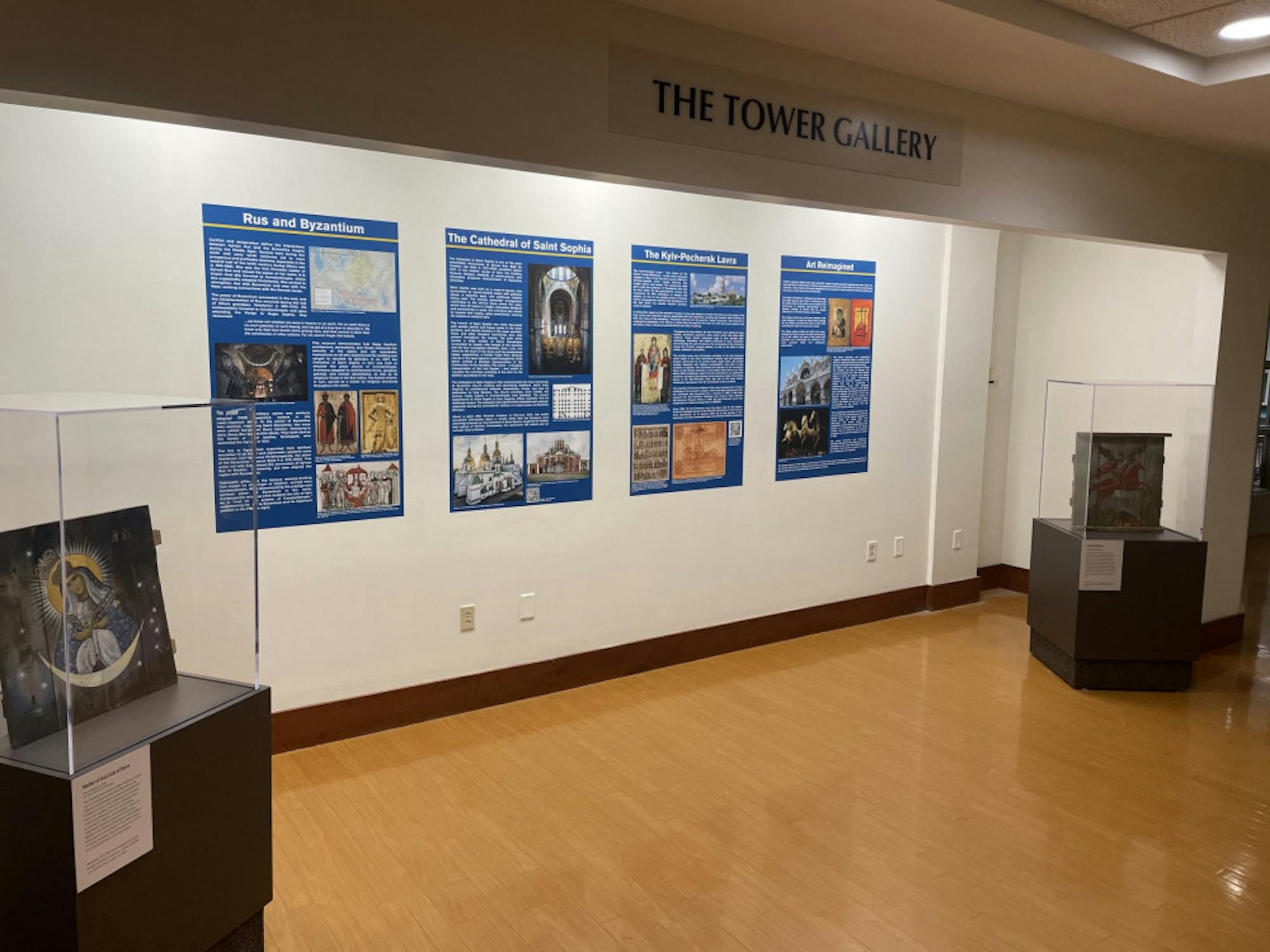After one full year of fighting during the Russian invasion of Ukraine, Tisch Library has premiered a new exhibit emboldening and empowering Ukrainian heritage. Located right at the library’s entry point, the collection calls on students and faculty to learn more about the region’s cultural history, free from the rampant Russification of Anglo-American scholarship.
The exhibition, which formally opened on March 6, was sponsored by Tufts institutions, including the Office of the Deans, Tisch Library, Lilly Music Library and various academic departments of the humanities and social sciences. Exhibit organizers included undergraduates, graduate students, professors and library organizers.
Alice Isabella Sullivan, an assistant professor in the Department of History of Art and Architecture, was one of the exhibit’s key organizers.
“This exhibition project started over coffee with Anna Kijas, the head of the Lilly Music Library, and centered around our shared interest in bringing the history and cultural heritage of Ukraine to our Tufts community,” Sullivan said. “We bonded over the shared interest in preserving and bringing to a broader audience the history and culture of this region that has been marginalized.”
The cultural history of Ukraine is not just academic — it’s political. As Russian militants justify their invasion through an argued historical right to the land, the exhibit puts on full display just how manipulated this history is.
Sullivan clearly pointed out the importance of accurate Ukrainian cultural histories to the ongoing conflict.
“[The war] brought to the floor how much the history and cultural heritage of this region has been manipulated and destroyed and transformed and Russified, especially over the course of the Soviet era,” Sullivan said. “This exhibition brings attention to a history that is interconnected, is diverse, has a local specificity in the Ukrainian cultural context and … is not a cultural heritage that links it to a Russian cultural milieu.”
After forming the idea with Kijas, Sullivan then recruited a small team of undergraduate and graduate students. These students primarily authored the bright blue panels detailing the region’s history, with Sullivan stepping in to revise and fact-check.
Among these students was Francesca Bisi, a graduate student in the Art History and Museum Studies program. Bisi worked on the timeline panel for the exhibit, where she gained an intimate knowledge of the history of the Kyivan Rus, the medieval kingdom that once ruled modern Ukraine.
“I think one of the reasons why this exhibition is important, especially now, is because … it provides some insight into some of this history which, even for me as someone who studies history, is not well known at all,” Bisi said. “It’s not really an area or a time period that we cover.”
Along with the historical panels, the exhibit includes three icons from the “Buy an Icon — Save a Life” project. Created by Ukrainian artists Oleksandr Klymenko and Sofia Atlantova, the works of art portray Christian figures painted on repurposed ammunition boxes from the conflict.
Bisi reflected on these icons and how they grounded the exhibit.
“They send a very strong message,” Bisi said. “I hope that placing this historical element and then this contemporary, very emotionally strong work of art, can amplify the purpose and the meaning of the exhibition.”
Placed squarely at the entrance of Tisch Library, the exhibit is widely accessible to the entire Tufts community. This was a goal on the part of the organizers, who hoped students would linger and learn about a part of history that lacks conversation.
Sullivan reflected on this placement, noting that Ukrainian cultural history often goes unspoken in university courses.
“Having this exhibition at Tufts in a public space that receives quite a bit of traffic, it’s a wonderful opportunity to expand the scope of the curricula that’s offered at the university,” Sullivan said. “We’re hoping that the students will pause and read the panels … and admire the icons that are on display, spend some time with the book exhibit and delve a little bit deeper into the history of a part of the world that has not really been at the forefront up until last year.”
On the opening day, the organizers got feedback in real time. This included commentary from various Ukrainian members of the Tufts population, many of whom were involved in the exhibition’s creation.
For Bisi, it was these community members’ praise that made it all worth it.
“Getting to go to the opening reception and hear from students and faculty who are from Ukraine and who are directly affected by this, and talk about why this exhibition matters to them and why they are grateful that it is up at Tisch, that was to me the most rewarding element,” Bisi said. “That made it all come together.”






